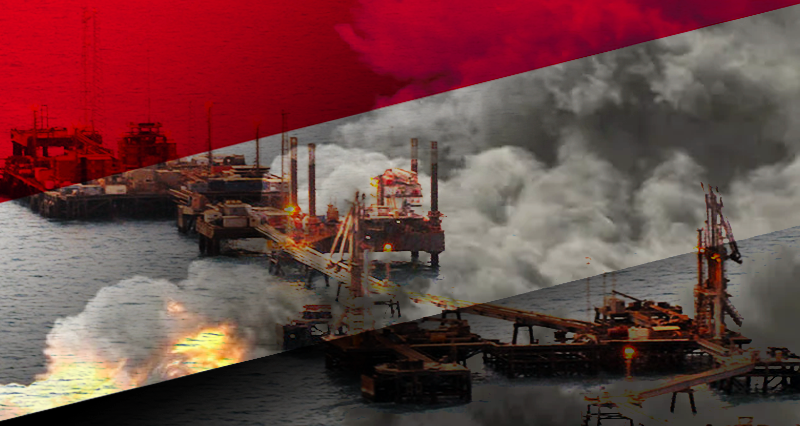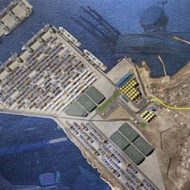To understand what is at stake in Bab-al-Mandeb, we first need to understand the impact of the situation on global trade.
World seaborne trade
Today, approximately 90% of the world’s trade is conducted by sea. Alfred Mahan, the renowned strategist considered the father of naval dominance theory, likened seas to highways. Seas are the widest and uninterrupted highways on the earth. Maritime trade allows you to reach any part of the world through this vast and uninterrupted highway, delivering goods in the most cost-effective way. When compared to trade conducted by rail, maritime trade is about three times cheaper, and to air transport, approximately seven times. Currently, over 100,000 container ships move billions of tons of cargo between around 1,000 ports worldwide.
World sea routes
There are prominent routes for this trade, and these routes have not developed randomly, they have been shaped since ancient times based on winds, rocky structures, and tidal currents.
Before the opening of the Suez Canal, circumnavigating the entire continent of Africa was necessary. The first instance of trade between Europe and Asia, following the circumnavigation of the Cape of Good Hope by the Portuguese navigator Bartolomeu Dias in 1488, established this trade pattern. This route became the dominant trade route, and developments conducive to long voyages, such as the enlargement of Latin sails, took place.
The Red Sea has the Suez Canal leading to the Mediterranean Sea at one end and the Bab-el-Mandeb Strait leading to the Indian Ocean at the other. Thus, the Red Sea connects the Indian Ocean and the Mediterranean Sea. There was no such connection until the late 1800s. However, there was information about the existence of such a connection in antiquity even before the Suez Canal.
Sokollu Mehmet Pasha and Napoleon
This route was first attempted to be opened by the Ottomans. In the era of the Great Discoveries, when Europeans began to reach Asia bypassing the Silk and Spice routes, Sokullu Mehmet Pasha proposed a project to open a canal in the Red Sea in 1568. However, the Ottomans couldn’t succeed in that time for some reason.
Napoleon commissioned a strong team to investigate ancient information and attempted to determine the route. In 1804, a book was published on this subject. However, Napoleon’s engineers made a calculation error, mistakenly believing that the Red Sea was 10 meters higher than the Mediterranean. As a result, they concluded that opening the mentioned route would be very costly.
The opening of the Canal
In 1869, at the directive of the Ottoman Empire’s governor of Egypt, the Ottoman Empire opened the Suez route. The opening of this route connected the Mediterranean with the Indian Ocean. We can measure the significance of this development as follows: Without the Suez Canal, reaching from Europe to Asia, for example, from Rotterdam to Tokyo, would require circumnavigating the African continent via the Cape of Good Hope, resulting in an additional 6-7 thousand kilometers compared to the Suez Canal.
Today, the Suez Canal facilitates 12% of world trade, with over fifty ships using this route every day. The Suez Canal ranks among the top three most strategic waterways in the world.
The case of Somali pirates
Today, the risk of completely closing this route to sea trade has emerged. A similar incident was witnessed in the case of Somali pirates. A joint decision was made in the United Nations Security Council to form a task force against Somali pirates in the Gulf of Aden. Türkiye was part of this group. A global consensus had been reached on combating “maritime piracy” in this context.
The US sought to create a similar task force against Yemen in the Red Sea, but couldn’t succeed. This is because the situation here is not similar to that of Somali pirates in the Gulf of Aden. Yemen took action against Israel’s genocide in Gaza. Yemen announced that it would only target ships with Israeli flags or those heading to Israeli ports along this route. Since the beginning of the war on October 7, more than 2000 ships have passed through this route, and only 17 of them were targeted, all of which were either flying the Israeli flag or heading to Israeli ports. Therefore, Yemen’s goal is not to completely cut off maritime trade.
Well above 100 billion dollars
Major global trade and maritime shipping companies such as Maersk and British Petroleum have decided to change their routes based on the perceived danger in the Suez Canal. They are now circumnavigating the Cape of Good Hope. This decision has significant impacts on prices and costs, leading to increased insurance premiums and container costs. There is a transport cost increase from $3.95 to $4.35 per kilogram. A 15-20% rise. Some container costs have even tripled.
We can gauge the potential impact of the closure of the Suez Canal by looking at the case of the Evergreen ship running aground in 2021. The canal was closed for a week, and the total damage to global trade was estimated at $100 billion. In the current situation, the cost is likely to be well above $100 billion.
No matter what
So far, I mentioned only the dimensions of global trade and costs. However, no matter what, the crux of the matter lies elsewhere. There is a genocide in Gaza. As long as the genocide continues, what happens to global trade is not the primary concern. The Houthis are doing their best to stop the genocide in Gaza.
The US has limited capabilities
What can the US do in this situation? Compared to other regions, the US has limited intervention capabilities in this area. Nevertheless, such a possibility exists, and as a precaution, the Houthis have mined their territorial waters. This serves as a measure against a potential amphibious operation. Among the ships the US has sent to this region are large amphibious assault ships like the USS Bataan.
It is challenging for the US to achieve decisive results through naval intervention. The cost of the tools the Houthis use to attack ships is much lower compared to the cost of the tools that ships could employ to counter these attacks. We know that the Houthis possess a significant number of such asymmetric tools.









Leave a Reply